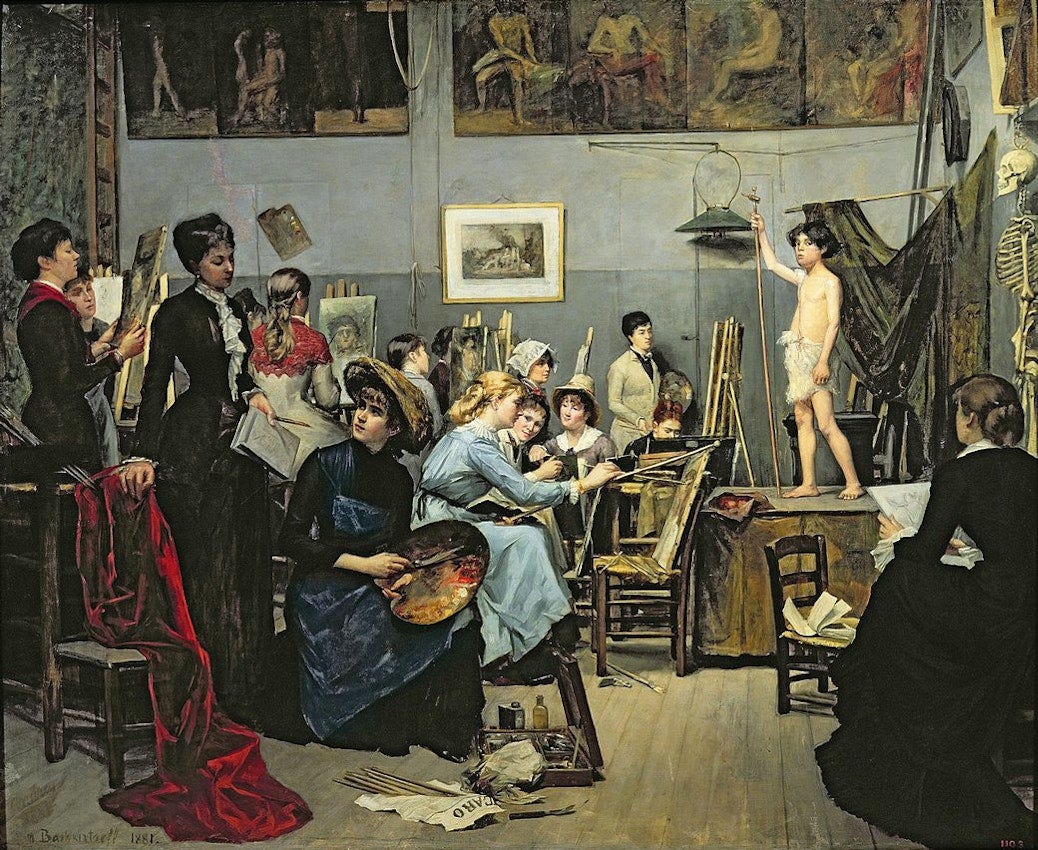
Welcome to the fall semester at Public Seminar! This week, we’re kicking off our pink high heels and joining Barbie on a voyage of discovery: What does a secret civilization run by women look like? Why leave your utopia for the Real World? And how come is Barbie invited to every party except the feminist theory party?
Barbie in Herland
Sandrine Bergès
The novelist Charlotte Perkins Gilman imagines that Herland had once been a community of slave-holding, polygamous people. After they lost all their men to war, the women developed the ability to reproduce without men. These women are strong, healthy, peaceful, educated, wise, technologically advanced, and do everything collaboratively.
The three stranded explorers are all men. The women of Herland capture them.
After isolating them to ensure they aren’t dangerous, the citizens of Herland allow Van, Jeff, and Terry to enter Herland as long as they are led by guides, and to interact with its inhabitants while under surveillance. Eventually, all three men fall in love with, and choose to marry their guides, Ellador, Celis, and Alima.
But to the husbands’ surprise, the women they have married don’t change a thing about their way of life: the wives of Herland expect their husbands to accept that they are in charge of their own destiny.
Public Seminar is free to read. You can support our work by making a tax-deductible donation.
The Barbie Curse
Honor McConnell
For generations of American girls, Barbie first appeared one day in our lives at a birthday party, as a holiday present, or even after a lucky trip to Toys “R” Us.
For a time, for some of us, she became anything and everything that we wanted her to be. A plastic doll had been designed to embody the promise that “girls can do anything.” A 12-inch tall icon of limitless possibilities.
From her inception in 1959 as a white fashion model living in her perfect mod dreamhouse without a kitchen or husband, to her latest, more politically correct reincarnations, in the collectible “inspiring women series,” as Rosa Parks, Helen Keller, Frida Kahlo, and mathematician Katherine Johnson. Mattel’s Barbie doll has evolved with the times—there are now a variety of Barbies that use a wheelchair, as well as a Barbie with Down syndrome.
Barbie has always been controversial.
She was either too sexy or too domestic. Too feminine, but not the right type of feminine. Too skinny, but oh—she had breasts! Depending on what academic experts you consult, she is a product of the patriarchy, but also the harbinger of radical hippie thought.
She is the most popular doll in the world—and the most hated.



